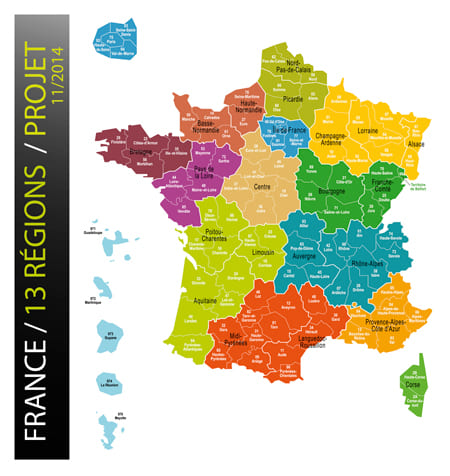French Regional Elections
Since a shake-up in 2016, France is now divided into 13 administrative regions, down from 22. The Pyrénées-Orientales was in the former Languedoc-Roussillon which merged with Midi-Pyrénées to become Occitanie. The regional capital is Toulouse. Here’s an overview of how the French regional elections work.

What powers do the regions have?
Each region has discretionary powers for spending on education, public transport, town and urban planning, economic development and tourism. When regional elections take place, the presidencies of each region are at stake, and although the regions don’t have legislative autonomy, they manage sizeable budgets and are a power to be reckoned with within the region.
When do French regional elections happen?
The last regional elections took place in December 2015 when each Conseil Régional was elected for six years. In Occitanie, Carole Delga of the left-leaning Parti Socialiste took the presidency, although overall, the left lost out to the right, taking 35% of seats compared to 43% for the right and 19% for Marine Le Pen’s National Front.
The upcoming elections will take place over 2 rounds, the first this Sunday 20th June, the second next week on 27th June (voting always takes place on Sundays in France).
How do French regional elections work?
The regional election process is very similar to that of the municipal elections (élections municipales), in which voters vote for a list of candidates, usually based on political parties, or alliances of parties.
Voters elect 1,758 regional councillors, deciding the majorities and presidents at the head of each region.
In the first round:
If a list obtains an absolute majority of the votes cast (more than 50%), it obtains a quarter of the seats to be filled and the remaining seats are distributed on the basis of proportional representation among all the lists which have obtained at least 5% of the votes cast.
In reality an absolute majority in round one is rare and usually a second round is held the following week.
In the second round:
Only lists that obtained at least 10% of the votes cast in the first round are eligible for voting in the second round and they may be merged with lists having obtained at least 5% of the votes cast.
The list that comes first in round two gets a quarter of the seats to be filled with the remaining seats distributed on the basis of proportional representation among the lists which obtained at least 5% of the votes cast in the second round.
(Source: https://www.service-public.fr/particuliers/vosdroits/F1958)
Even though turn-out is often low, the regional elections are regarded as an important barometer of public opinion in the run-up to the presidential election. These take place every five years so the 2021 regional elections may give a good indication as to whether Macron will be ousted in the presidential elections which will take place in 2022, and by whom.
Who can vote?
Voters must be over 18, French citizens or from an *EU country, and registered on the electoral roll.
BREXIT
*British nationals have lost their right to vote in the French municipal elections given that Britain is no longer a member of the European Union.
Did you know?
Occitanie is made up of thirteen departments: Ariège (09), Aude (11), Aveyron (12), Gard (30), Gers (32), Haute-Garonne (31), Hautes-Pyrénées (65), Hérault (34), Lot (46), Lozère (48), Pyrénées-Orientales (66), Tarn (81), and Tarn-et-Garonne (82).
Find out more about the merging of the French regions here.



Interesting!
Thank you for such a clear summary and explanation.